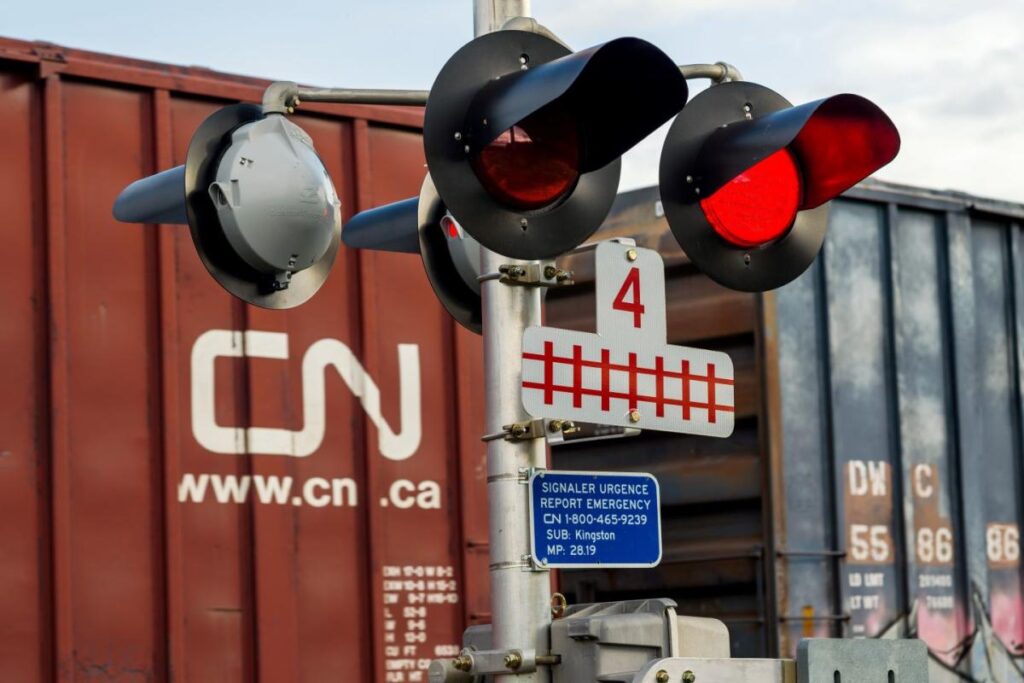A decision by the Canadian government means that more than 9,000 Canadian railway workers will have to continue working. The decision has been appealed to the court by the Teamsters Canada Rail Conference and other unions.
Teamsters is concerned about workers’ bargaining power.
Last week, the American Apparel and Footwear Association warned of the threat to U.S. supply chains after the first-ever worker lockout. Canada ships about 75% of all its exports to the U.S., mostly by rail.
The AAFA was particularly concerned about the impact during the critical period surrounding the start of the school year and the start of the holiday rush.
“Amid numerous maritime supply chain disruptions, companies are already diverting cargo and facing problematic truck routes. It is imperative that all logistics stakeholders continue to work together to support modern, efficient systems and ensure safe, responsible workplaces that power those systems,” said Steve Lamar, CEO of the AAFA at the time, urging a return to the bargaining table between unions and management to ensure a fair, sustainable deal in the long term.
But now that the lockout has been forced to end and unions have rebelled against the government’s stance on collective bargaining and workers’ constitutional rights, industry observers fear the solution may be short-lived.
Bob Antoshak told Just Style that the drama is still playing out in Canada between CN/CPKC and the Teamsters, quoting Jon Gold of the NRF.
“Despite yesterday’s announcement that the Canadian government has instituted mandatory arbitration, the Teamsters have issued a 72-hour strike notice to CN. The Canadian government must do everything in its power to bring the parties to the table to negotiate without further disruption.”
“It may not be over yet.”
China has been a source of irritation for a few years now due to its trade restrictions, and most American apparel brands and retailers have been looking at ways to diversify their sourcing in an effort to eliminate China from their supply chain in the long term.
But over the past year, the Red Sea supply route has been threatened as an indirect result of the Gaza-Israel conflict.
Global retailers and footwear brands continue to struggle with the effects of rising energy prices as a result of the Russia-Ukraine conflict.
Together, these events cause the cost of acquiring resources to rise dramatically.
According to the 11th USFIA Benchmarking Study One of the top three concerns for apparel purchasing executives in 2023 is rising procurement costs due to macroeconomic pressures.
Macroeconomic data indicate that the U.S. Consumer Price Index (CPI) exceeded 120 in May 2023 (January 2019=100) and the U.S. apparel import price index reached 106.5 (January 2019=100), both the highest in the most recent 12 months. Inflationary pressures from the macro economy are likely to continue to affect U.S. fashion companies’ input costs for the remainder of 2023.
Lamar told Just Style that the AAFA was “grateful” that the Canadian government intervened quickly and brought all parties back to the negotiating table.
“Indeed, millions of workers and consumers around the world, and global economies, depend on a stable, reliable and effective flow of goods through our global supply chains… This demonstrated the Trudeau government’s commitment to protecting global supply chains while working to achieve a fair, sustainable and long-term deal for Canadian rail workers.”
But he warns of similar concerns that apply to other parts of the apparel supply chain.
Currently, Bangladesh, the third-largest garment supplier to the US, is still reeling from the aftermath of student protests that have led to massive civil unrest, factory closures, the ousting of the country’s prime minister and a leadership change within the Bangladesh Garment Manufacturers Exporters Association (BGMEA).
Several brands have moved to nearby locations.
Lamar says the AAFA is also monitoring a possible strike on the East Coast, a possible dockworkers strike in India and continues to address the ongoing logistics crisis on the Red Sea.
Meanwhile, GlobalData analyst Neil Saunders warned that while the Canadian railways’ decision “averted a deep crisis”, it does offer lessons for the retail and apparel sectors about the fragility of supply chains.
“Retailers need to build in flexibility in terms of delivery times. For some, it is also worth having back-up delivery options and alternative modalities.
“The problem is that these types of disruptions don’t happen regularly and there is a balance to be struck between creating redundancy in the supply chain and cost.”
“Explainer: Canadian rail strike is over, but apparel and retail brands remain cautious” was originally created and published by Just Stylea brand of GlobalData.
The information on this site is included in good faith for general information purposes only. It is not intended to amount to advice on which you should rely and we make no representation, warranty or guarantee, express or implied, as to its accuracy or completeness. You must obtain professional or specialist advice before taking, or refraining from, any action on the basis of the content on our site.







